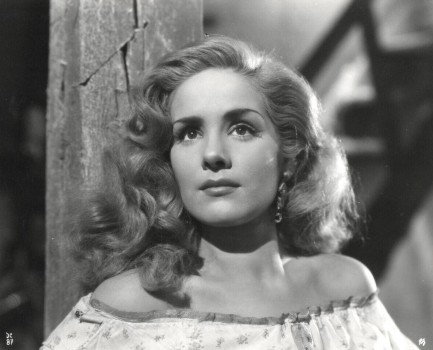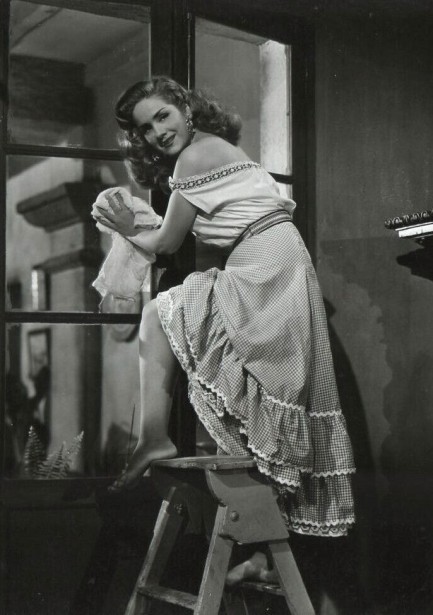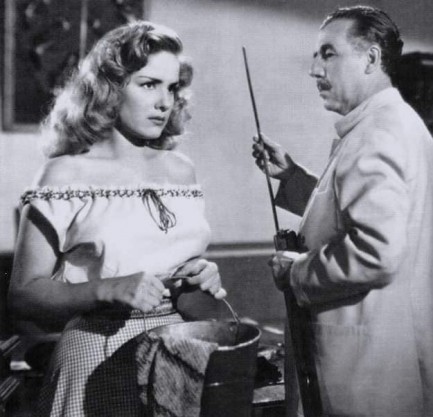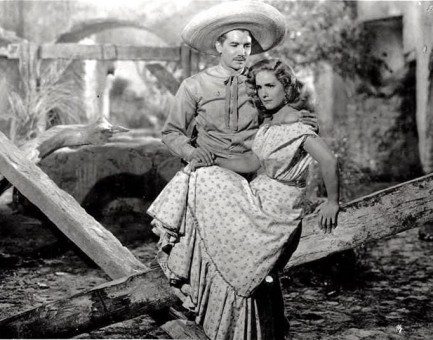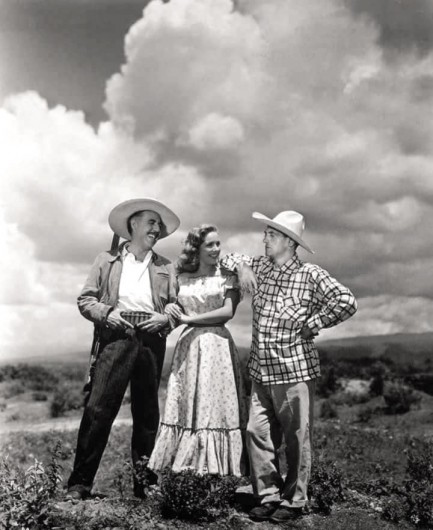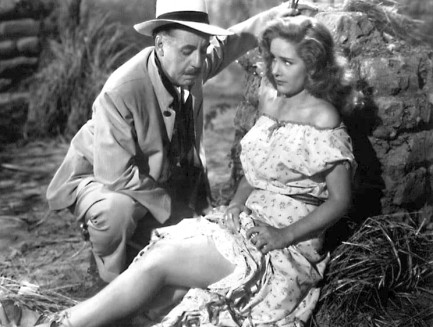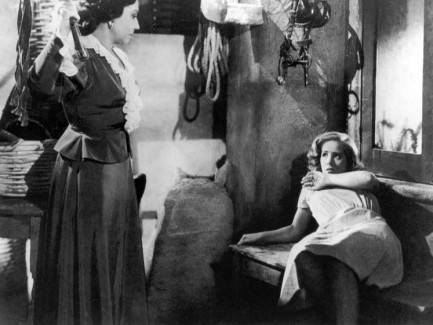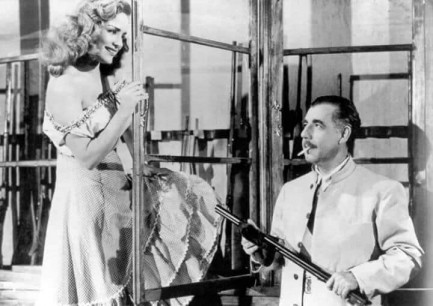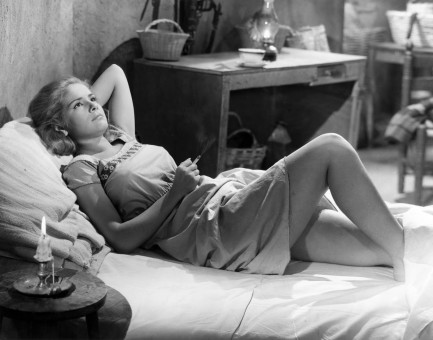| Vintage Pulp | May 15 2014 |

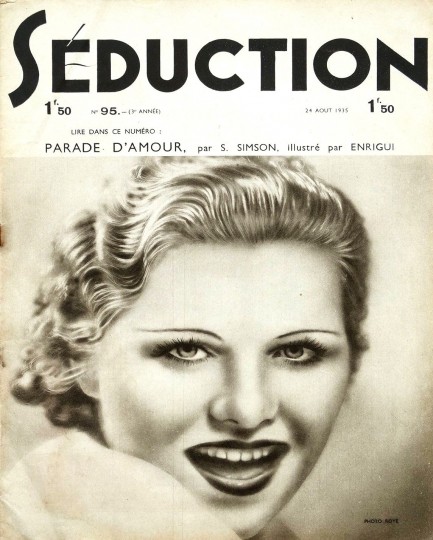
She may look like she’s going to kill and eat the next person she sees, but to French readers of the 1930s this was apparently a come hither look. We’ve seen many issues of Seduction on auction sites but haven’t bought any. Not sure if we will at some point, simply because the magazine’s contents are similar to those of others we already own from the time period. However, the covers are a different story—they’re unusual, and consist solely of photos or photo-illustrations of faces by lensmen such as Schostal or Roye, or sometimes drawings by artists like Davanzo. Above is the work of Horace Roye, who was in his late twenties and just establishing himself when he did this cover, but would go on to international fame, sometimes doing considerably edgier work, like his infamous crucified nude wearing a gas mask. This is a beautiful image, even with the model’s psycho smile. Luckily the other covers aren’t quite so weird. Below are eleven your pleasure, 1934 to 1939. And if you want to see another humorously phony smile, look here.
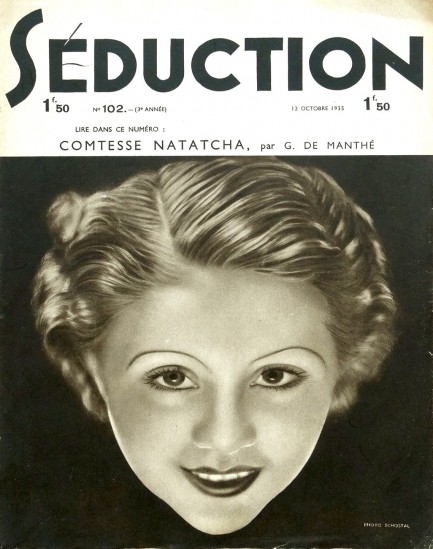
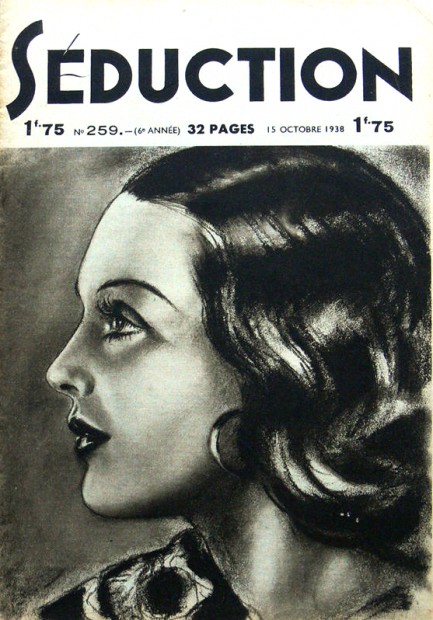
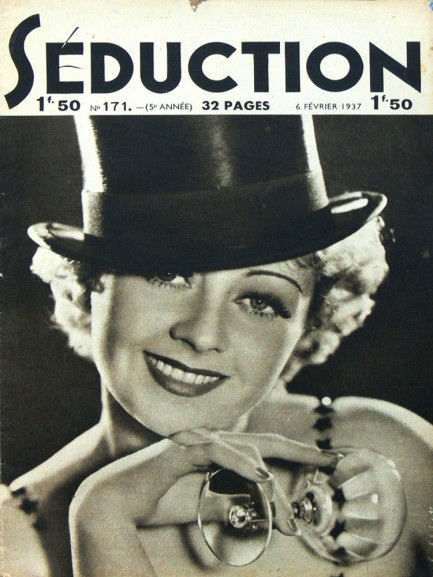
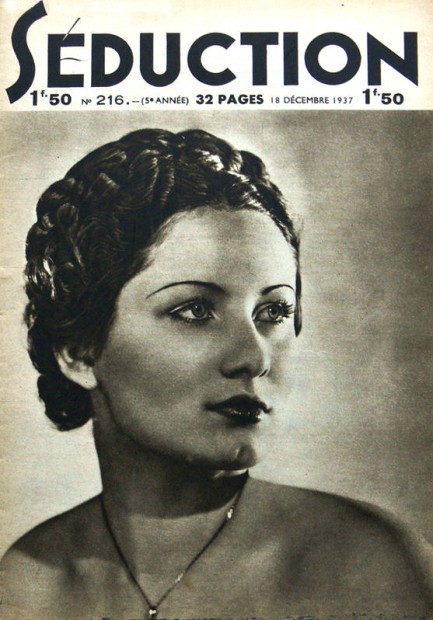
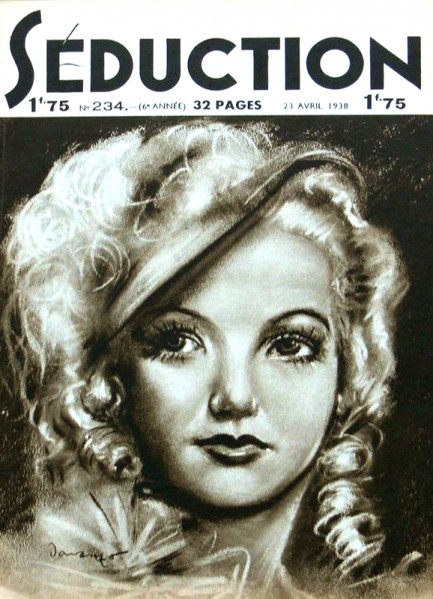
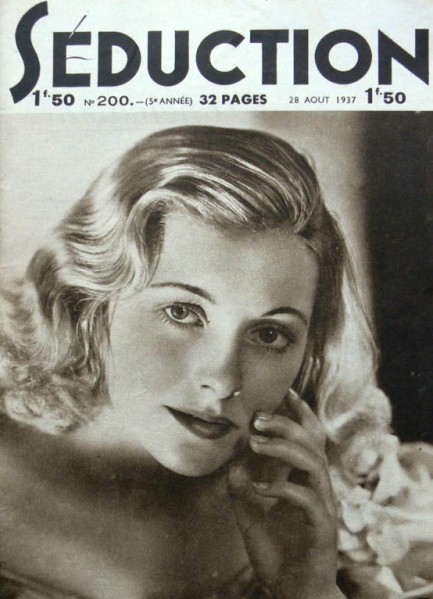
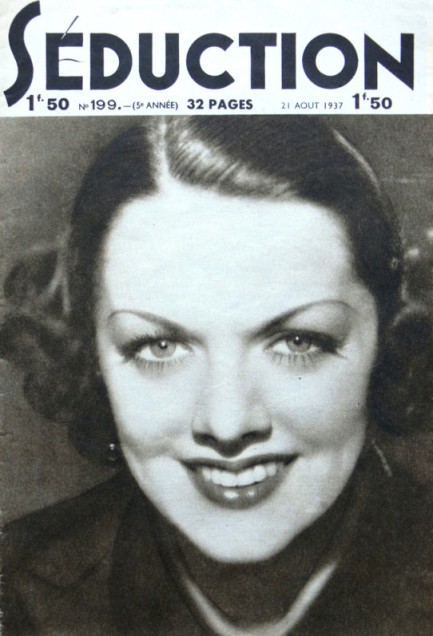
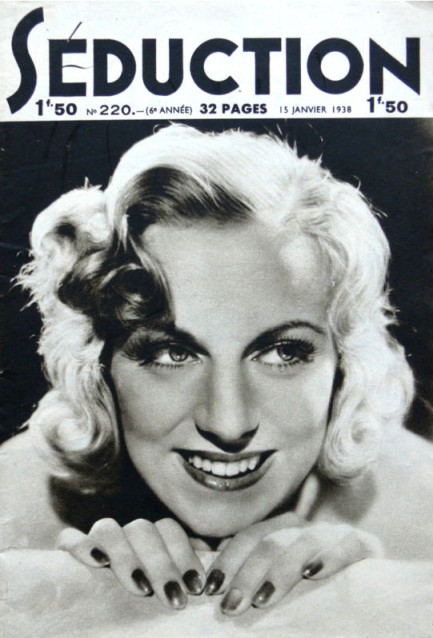
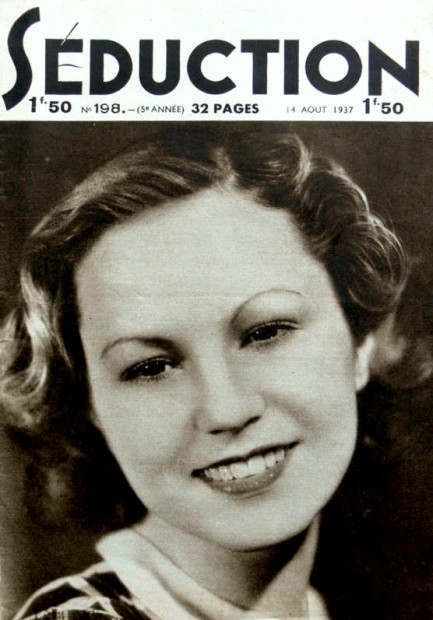
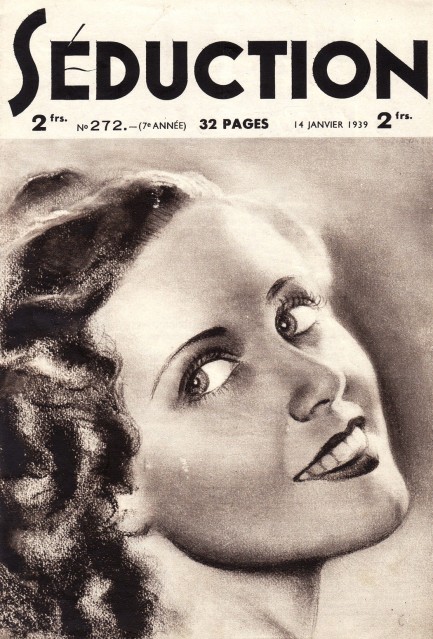
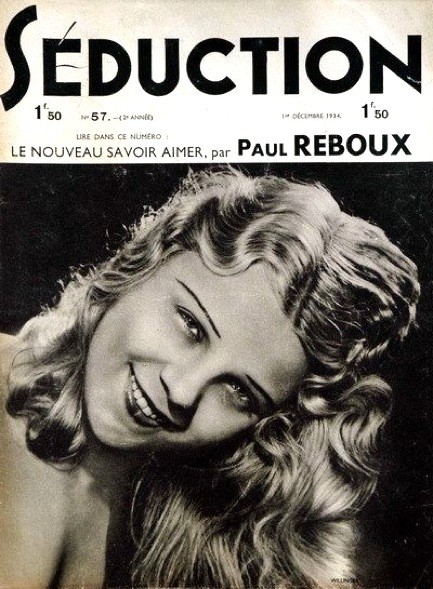
| Vintage Pulp | Apr 11 2010 |

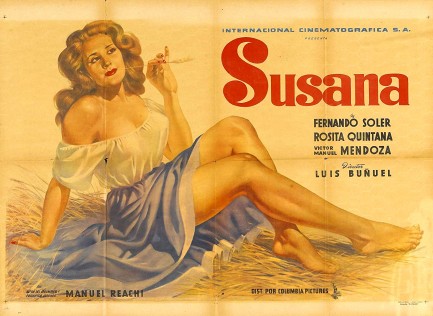
Because of their dimensions and the narrow width of the main column on our website, we don't like to use horizontally oriented posters unless they're the Japanese bo-ekibari style meant to be assembled from two halves. But sometimes there's no choice. This promo was made for the Mexican drama Susana, also known as Susana: Carne y demonio, starring Rosita Quintana. It was helmed by the legendary Spanish director Luis Buñuel, who would go on to make classics like Belle du jour, Cet obscur objet du désir (That Obscure Object of Desire), and Le charme discret de la bourgeoisie (The Discreet Charms of the Bourgeoisie). In this one, he tells the story of the crazed young title character, who's jailed in a reformatory but escapes during a thunderstorm and turns up at the house of an upper class family, drenched and peering in their dining room window. In the lightning and rain, the family thinks at first that Quintana is some sort of apparition or devil, and by the end of the movie they realize they were right. But she isn't a supernatural devil. She's the most natural devil of all—the femme fatale.
After the family rescues her from the rain and offers to let her stay they slowly succumb to the poisons of lust and jealousy, eventually realizing that Susana is not a lost and helpless waif, but a manipulative temptress and cocktease—and crazy besides. Every man in the movie wants her, and she's willing to entertain possibilities with all of them. The scenario presented of the patriarch of a family desiring a highly sexual newcomer in the household is archetypal now, having been used in everything from the Brazilian television series La Presença de Anita to Jaime Pressly’s 1997 so-bad-it’s-good softcore hit Poison Ivy: The New Seduction, but it was fairly new back then, and it's pretty hot stuff—especially when you compare it to what was happening in U.S. cinema at the time. But even though the movie is racy, has a beautiful lead actress, and was directed by Buñuel, we can't give it a full endorsement. It plays a little too much like a Mexican novela or soap opera. But it's fascinating and certainly worth watching. Susana premiered today in 1951.